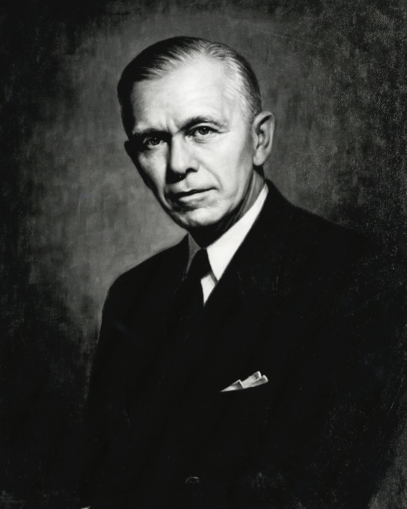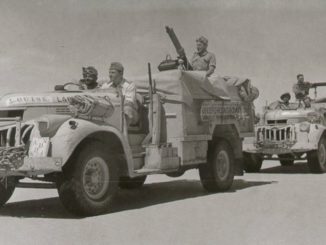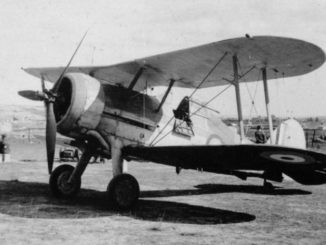
U.S. Department of State from United States [Public domain]
Following on from the Morgenthau Plan, only partially and half-heartedly implemented, we come to the much better known Marshall Plan. This was named after General Marshall who at the time was the US Secretary of State in the Truman Administration. The Plan was actually created by Lewis H Brown in 1947 at the behest of General Lucius D Clay who was the military governor of the US zone in Germany. Let me just say here, the Americans do love using their middle initial; Harry S Truman was christened Harry Truman and invented the S as he felt at a loss without the middle initial, but I digress. Lewis was the former chairman of Johns-Manville, once the world’s largest manufacturer of asbestos, back in the days when asbestos was seen as a good fire resistant material.
We all know the US doled out its largesse to all and sundry but the real picture is actually quite confusing. Some was given, some was given as loans that were not to be paid back and some was just straightforward loans. The UK was the largest recipient of the aid in the Marshall Plan, it didn’t really do us that much good. Most other countries invested the aid to rebuild their countries from the wrecks they were after the war. Atlee, being a good socialist, used it to create the beginnings, or rather extension, of the welfare state (including our NHS), something we still suffer from IMHO. In our case, it wasn’t really invested at all, more like hosed up a wall, or several walls to be precise.
The original plan was to give over $12 billion to help rebuild Western Europe, this rose to be about $17 billion dollars over the four years it ran and even then it was replaced by more handouts afterwards. Those who rail against the USA these days seem to be blissfully unaware of all this. There were other loans as well as the Marshall Plan so the Americans gave an awful lot of money to help Western Europe even if much of it had to be repaid. If the Chinese took us over today, would they do the same ?
The goals of the US were to
- rebuild war-torn regions
- remove trade barriers
- modernise industry
- improve European prosperity
- adopt modern business procedures (the Americans were far in advance of Europe in this)
The aid was to be divided between the 18 nations on a roughly per capita basis, mainly to industrial nations. The Allied nations got proportionately more than the Axis nations, but even so, victors don’t usually help their former adversaries out of the mire. The Soviets and their satellites were also offered aid but the Russians refused it and also blocked it to its colonies Eastern Europe.
Not to be outdone, the Soviets invented their own version of the Marshall Plan. It was called the Molotov Plan but was all a bit suspect because the Russians were busy removing as much industrial plant as the could from the former Axis powers and the money they returned in no way compensated those nations for what had been nicked. Eastern Europe was destined to live in poverty for the next 45 years.
The effectiveness of the Marshall Plan Aid is still being debated to this day. One theory is that it added one half of a percent to overall GDP in Western Europe. It may have done more, it gave hope to countries that had been nearly destroyed by the fighting. The only two nations that still had prosperity in 1945 were the USA and Canada. The truth may be that, rather like Tesco, every little bit helps.
Also founded around the same period, and mostly still going, were
- The World Bank
- The International Monetary Fund
- The International Trade Organisation (didn’t really take-off until they started the WTO)
- The General Agreement on Tariffs and Trade
Having had an attempt at the Morgenthau Plan, the Americans decided that Germany needed to become prosperous and stable and so most of what had been restricted in Germany was either allowed or restrictions watered down. For example steel production was allowed to rise.
The US had already been working to revive Europe, from 1945 to the end of 1947 $14 billion was spent in or loaned to Europe. Britain alone received $3.75 billion. Then the Marshall Plan aid kicked in as well. The American people were obviously not all in favour of dishing out shedloads of money to other countries. The Truman Administration and General Marshall and a large publicity campaign was started to prepare the US as a whole of the advantages of dragging Europe out of the mire.
When the Plan was ready to start, there were meetings between the sixteen nations about how best to distribute and use the money. The French wanted to ensure Germany would not be able to invade them again. The Benelux countries wanted a more prosperous Germany because their economies were closely linked. The Scandinavians wanted to maintain trade relations with the now Stalin dominated East and ensure they kept their neutrality. The UK, of course, insisted on a special status because it was less devastated than other nations and thought they might get less aid as a result. The minefield was negotiated and the Marshall Plan started delivering the money after approval by Congress. It would never happen today. The modified plan asked for $22 billion (various requests from the Europeans) and was watered down to $17 billion.
As you will imagine, most of the Marshall Plan Aid was used to buy goods from the USA, initially food and fuel and later goods for reconstruction. By the time the Korean war started, some of the aid was also used to build up the military. The exception to this was the UK where lots of it was used to kick start the NHS and more Welfare State, something we are still suffering from.
One of the big objectives of the Marshall Plan was to improve industrial efficiency using the latest American methods. The US Bureau of Labour Statistics was heavily involved in this and it was cheap in comparison to the other aid. Their experts measured European efficiency and recommended ways to improve output per worker. As part of this, European nations sent their businessmen and experts to the US to see at first hand how it all worked. It took an American 9 months wages to buy a new car, in France they had to work 30 months. For all we know, it may still be the same.
Was the Plan successful ? The answer is still being discussed and there is still disagreement. It surely was no bad thing for Western Europe to be given aid to help them out of the destruction, the big question is how beneficial was it. In percentage terms it was not large only a few percent of a nation’s annual budget at most but every little bit helped and must have good for morale.
This is a table from Wikipedia (usual caveat) describing where the money went.
|
Country |
1948/49 ($ millions) |
1949/50 ($ millions) |
1950/51 ($ millions) |
Cumulative ($ millions) |
|
232 |
166 |
70 |
468 |
|
|
Belgium and Luxembourg |
195 |
222 |
360 |
777 |
|
103 |
87 |
195 |
385 |
|
|
1,085 |
691 |
520 |
2,296 |
|
|
510 |
438 |
500 |
1,448 |
|
|
175 |
156 |
45 |
376 |
|
|
6 |
22 |
15 |
43 |
|
|
88 |
45 |
0 |
133 |
|
|
594 |
405 |
205 |
1,204 |
|
|
471 |
302 |
355 |
1,128 |
|
|
82 |
90 |
200 |
372 |
|
|
0 |
0 |
70 |
70 |
|
|
39 |
48 |
260 |
347 |
|
|
0 |
0 |
250 |
250 |
|
|
28 |
59 |
50 |
137 |
|
|
1,316 |
921 |
1,060 |
3,297 |
|
|
Totals |
4,924 |
3,652 |
4,155 |
12,731 |
Some of the aid was effectively gifts, some was loans and had to be repaid and some was loans that didn’t have to be repaid (no, me neither) but 1951 was the last year that money was sent under the Marshall Plan. The Korean War was beginning to cost more and more. From 1951 to 1961 the Americans still gave Aid under the Mutual Security Plan but to a much broader range of countries and generally to poorer ones. In 1961 the USA created the Agency for International Development to replace the Mutual Security Plan, the AID was oriented more towards Latin America. By this time Western Europe was up and running. The only Western European nation not in receipt of Marshall Plan aid was Spain under General Franco but he allowed American bases in Spain and so made at least some money from them and also benefited from the Mutual Security Plan.
Countries in Eastern Europe were forbidden by the Soviet Union to accept any Marshall Plan money or to participate in any of the discussions. Far from receiving help the Soviet Union insisted on reparations from those countries that had been part of the Axis such as East Germany and Hungary. The previously mentioned Molotov Plan was not a generous one. Little wonder that Eastern Europe was so relatively poor when compared to the West.
The purchasing power of a dollar in 1950 is just over ten dollars today so the twelve billion or so handed out under the Marshall Plan equates to about 120 billion today. We could say that isn’t a lot but to a flattened country it must have made a bit of difference.
© well_chuffed 2020
The Goodnight Vienna Audio file



